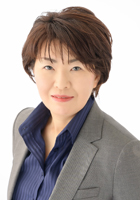Kyoto is in the middle of the Gion Festival Adachi Saeko (Small and Medium Enterprise Consultant)

In July, Kyoto is in the middle of the Gion Festival. When you think of the Gion Festival, you probably think of the Yamahoko Procession and its pre-festival Yoiyama, which take place every year on August 17th and 24th. However, the festival events take place almost every day from July 1st to 31st.
Did you know that the Gion Festival also includes a portable shrine procession? As for the events at Yasaka Shrine, the portable shrine procession, known as the Shinkosai and Kankosai, is the central Shinto ritual. The Shinkosai takes place on the evening of July 17th, and the Kankosai on the evening of July 24th, after the Yamahoko Procession of the pre-festival and post-festival. Rather, the Yamahoko Procession is meant to purify the road for the portable shrine procession.
The Yamahoko Junko procession is held in an elegant atmosphere, and people from other prefectures may think of it as a Kyoto festival, but the impression is different for the Shinkosai and Kankosai. It is a dynamic and heroic event in which more than 1,000 people carry three large mikoshi that are pushed around wildly, and I have loved this mikoshi procession since I was a child. The Yoiyama and Yamahoko Junko are crowded with people, and children cannot get close, but in the evening after they are over, the crowds are thin and local residents tend to go out. For that reason, it is more familiar than the Yamahoko Junko.
Many people consider the Gion Festival to be a great event to attract more tourists to the tourist city of Kyoto. For that reason, the city’s tourism association installed premium seats for 400,000 yen per seat, which allows people to watch from a special seat, last year, which became a big topic. However, the chief priest of Yasaka Shrine responded to this by saying, “The Yamahoko Junko is a religious ceremony, not a show,” and it seems that it will be scaled down this year.
In fact, the Gion Festival originated from a Goryoe ceremony to pray for the souls of those who died in an epidemic in 863 and for health and longevity. The following year, in 864, there was a major eruption of Mount Fuji, and five years later, in 869, many people were killed in a major earthquake in Tohoku and the resulting tsunami. It is surprising how many parts of the festival overlap with our modern times, but perhaps that is what history is all about. The Gion Festival is essentially a ritual to pray for peace and longevity, and it is something that must be passed down. For this reason, when the Yamahoko parade and other events were canceled due to the COVID-19 pandemic in 2020, I felt a little bit of opposition to the upside-down nature of scaling down and canceling a festival to ward off epidemics due to an epidemic. However, it seems that the festival was postponed a total of three times during the Meiji period due to a cholera epidemic, so postponing or scaling down due to an epidemic was a precedent.
With the COVID-19 pandemic now over, the Gion Festival has been fully revived this year, and although not as hot as last year, it will be held in the midst of a scorching heat. Summer in Kyoto is hot and humid, which is typical of a basin. If you are coming to visit, please take adequate precautions against heatstroke. Unfortunately, the Yamahoko procession of the first festival will have ended by the time this paper is published, but you will be able to make it in time for the Atomatsuri on the 24th. It is not a tourist event, but we hope you will see it if you have the opportunity. And if you come, don’t just go after the Yamahoko procession, but make sure to burn the wild yet heroic portable shrine procession of the Kankosai into your memory.
※Translating Japanese articles into English with AI
